Layered with a long history of relocations The Komaba Research Campus
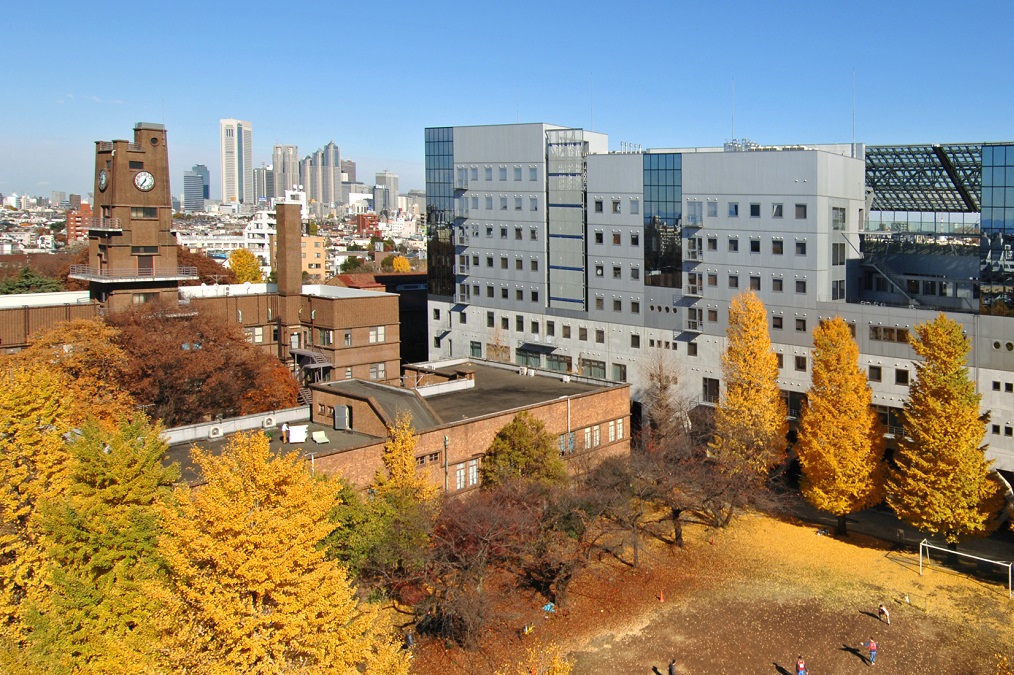
Campus Walk @ Komaba II Campus
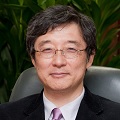
Tomonari Yashiro
Professor
Institute of Industrial Science
http://yashirolab.iis.u-tokyo.ac.jp/
If you take a map and draw a line linking Komaba-Todaimae Station and Ikenoue Station on the Keio Inokashira Line to Higashi Kitazawa Station and Yoyogi Uehara Station on the Odakyu Line, you will end up with a square. The Komaba Research Campus (Komaba II Campus) is located inside that square, with the southern edge of the campus bordering the Inokashira Line.
This place was once a farm that belonged to the Tokyo Imperial University’s Faculty of Agriculture (former Komaba School of Agriculture). After the Great Kanto Earthquake, the Faculty of Agriculture and the First Higher School agreed to exchange land lots, and the University also reached an agreement to exchange its land in Komaba for Marquis Maeda’s plot in Hongo. Furthermore, the Aeronautical Research Institute of Tokyo Imperial University, which was initially located in Etchūjima, was relocated to Komaba after its facilities sustained earthquake damage. In the end, the First Higher School, Marquis Maeda’s home, and the Aeronautical Research Institute were relocated to the former site of the Faculty of Agriculture. The Aeronautical Research Institute completed its move in 1930, and has since been succeeded by the Komaba Research Campus as we know it today.
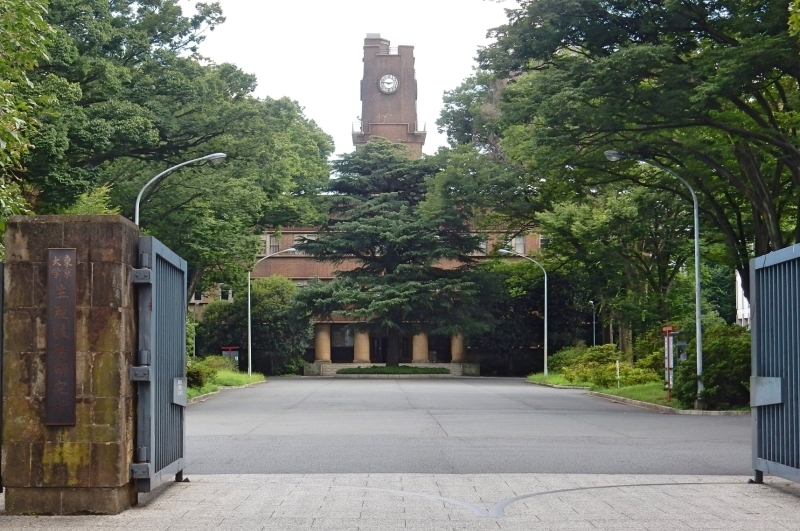
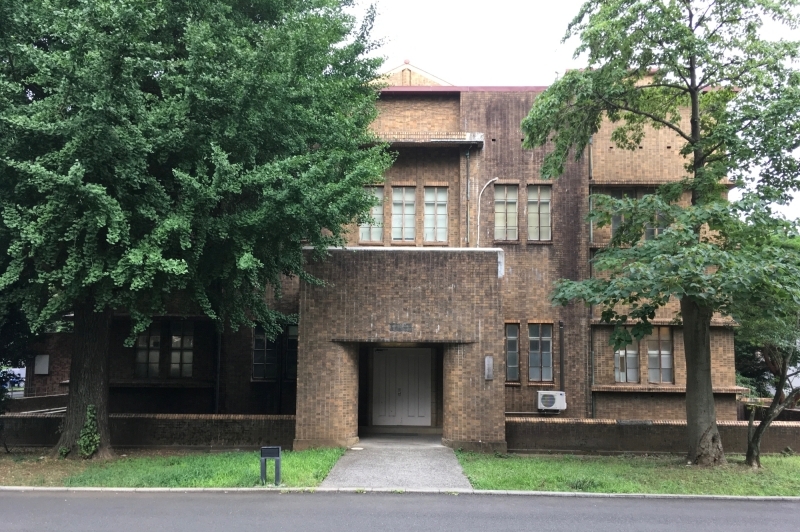
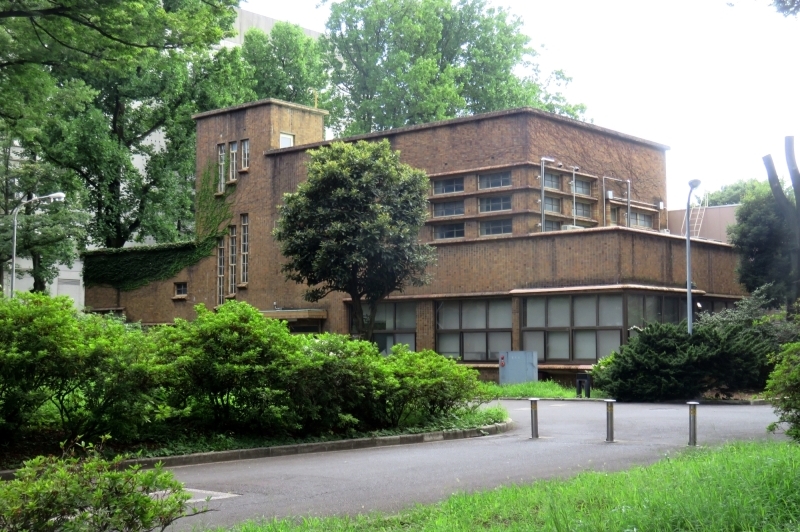
Around the main gate located on the north side of the campus, you can still feel the atmosphere of the time when the Aeronautical Research Institute was transferred to the site. Upon entering the gate, you soon see a big Himalayan cedar and a building with a clock tower behind the tree. The building (now Bldg. 13; photo 1) used to be the main building of the Aeronautical Research Institute and is registered as a National Tangible Cultural Property. It is located between the Wind Tunnel Laboratory (Bldg. 1, photo 2) and the Central Workshop (Bldg. 17, photo 3).
In the 1920s, Professor Yoshikazu Uchida was in charge of the buildings department of Tokyo Imperial University, and oversaw the entire design of its campuses. It is said, however, that he asked Hideto Kishida, who designed the Yasuda Auditorium with him and later became a professor at the University, to design the Aeronautical Research Institute campus. As a result, Bldg. 1, Bldg. 13 and Bldg. 17 reflect the architectural style of Kishida and the influence of German expressionism to a larger extent than the Yasuda Auditorium (he spent a year in Europe in 1925). For example, the clock tower of Bldg. 13 is narrower in its upper section and is asymmetric (photo 4). Moreover, the horizontal glass windows on the northeast corner of Bldg. 17 exhibit characteristics of modern architecture which cannot be found in so-called “Uchida Gothic” architecture.
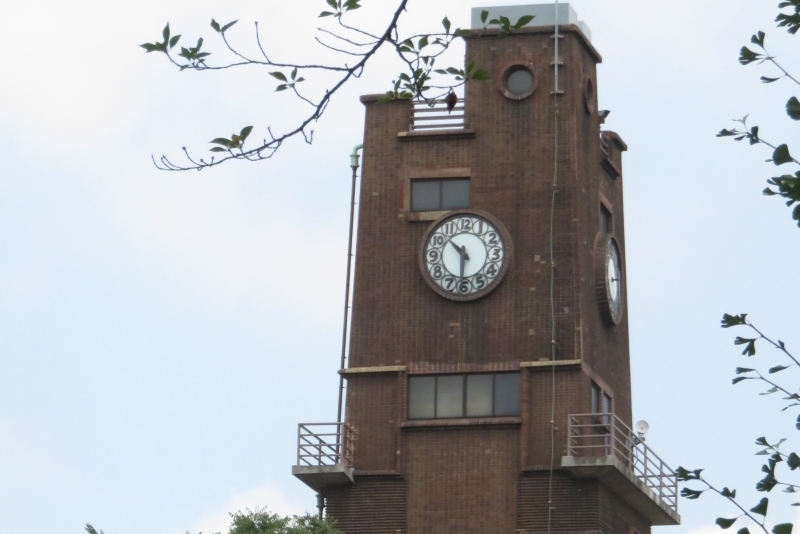
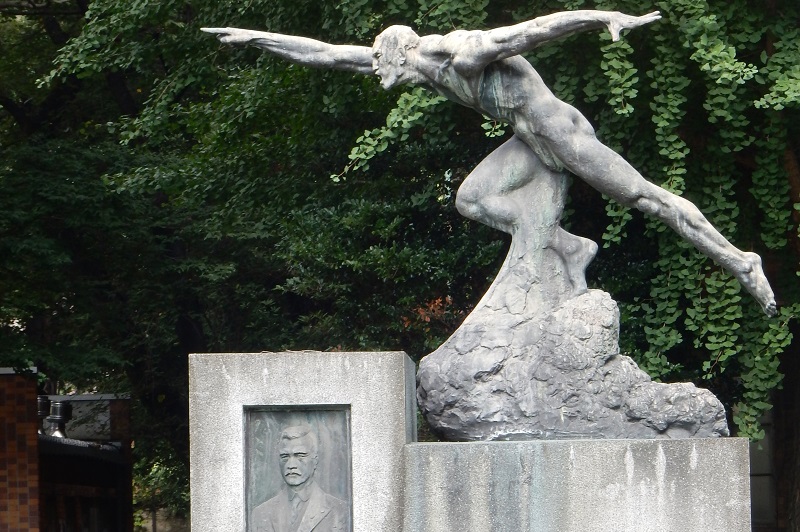
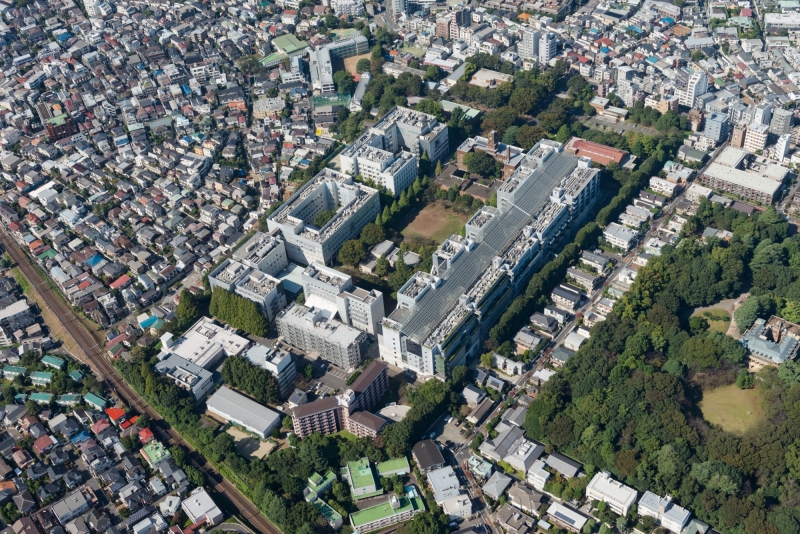
In front of Bldg. 1, you will find a uniquely shaped bronze statue that seems to embody the concepts of flight and speed (photo 5). This statue was built in 1935 in honor of Chūzaburo Shiba, head of the Aeronautical Research Institute, who made great contributions to the relocation of the Institute to Komaba. According to Professor Terunobu Fujimori’s article published in the sixth issue of Tansei (2002 Vol. 6), Shiba was a descendant of a family that served the Kaga Domain, which was governed by the Maeda family. Perhaps it is not a coincidence, then, that this campus, which used to be the campus of the Aeronautical Research Institute, is located adjacent to land formerly owned by Marquis Maeda (presently Komaba Park).
The Komaba Research Campus always seems to be on the move. The Aeronautical Research Institute later became the Institute of Space and Aeronautical Science, and then the Institute of Space and Astronautical Science under the direct control of the Ministry of Education, Science and Culture. It was relocated to Fuchinobe in Kanagawa Prefecture in 1981. Subsequently, in 1987, the Research Center for Advanced Science and Technology was established in the former site of the Institute, and the Institute of Industrial Science moved to the campus from Roppongi during the period from 1999 to 2001.
Due to the relocations, most of the buildings on the south side of the campus have been newly constructed based on the master plan developed by Professor Hiroshi Hara. In accordance with this plan, the rectangular-shaped University Square is surrounded by the newly constructed buildings for the Institute of Industrial Science and the Research Center for Advanced Science and Technology, with Bldg. 13 serving as the “keystone” (photo 6).
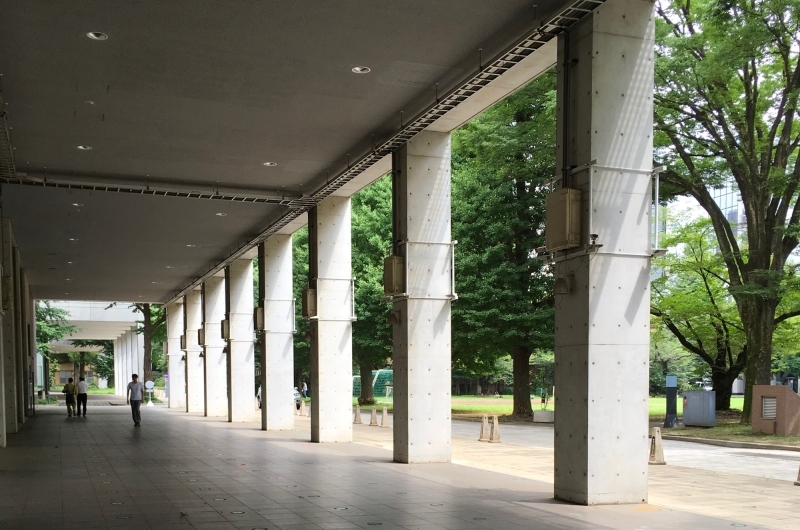
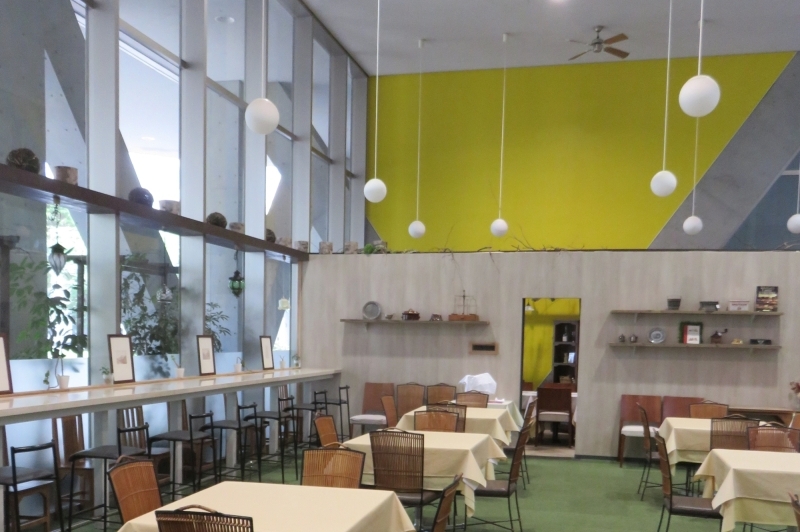
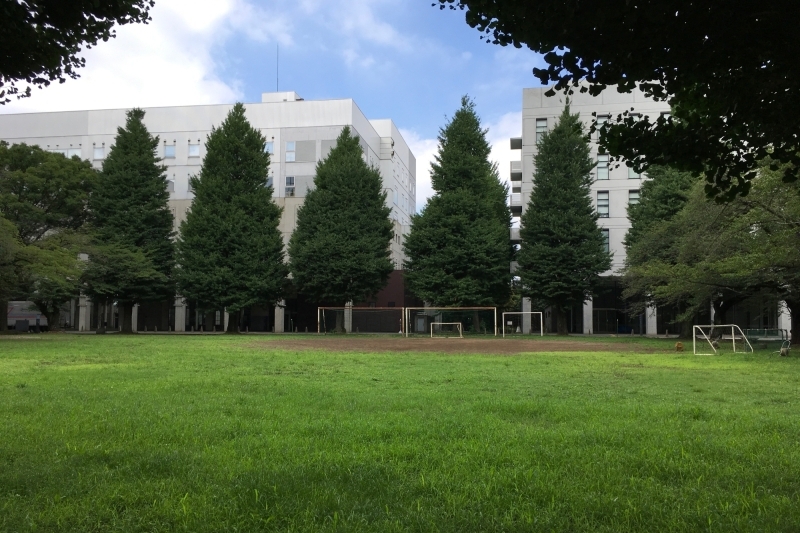
Most of the buildings surrounding the square are contiguously linked together by pilotis (photo 7). If you walk around counterclockwise starting from the northeast end of the pilotis, you will go past Bldg. 3, Bldg. 3-South, Bldg. 4, the General Research Laboratory Building (An block), and the Institute of Industrial Science Research Building (B-F block). The An block, located on the south end of this rectangular walkway, houses a restaurant which is often crowded during lunchtime and after on-campus functions (photo 8).
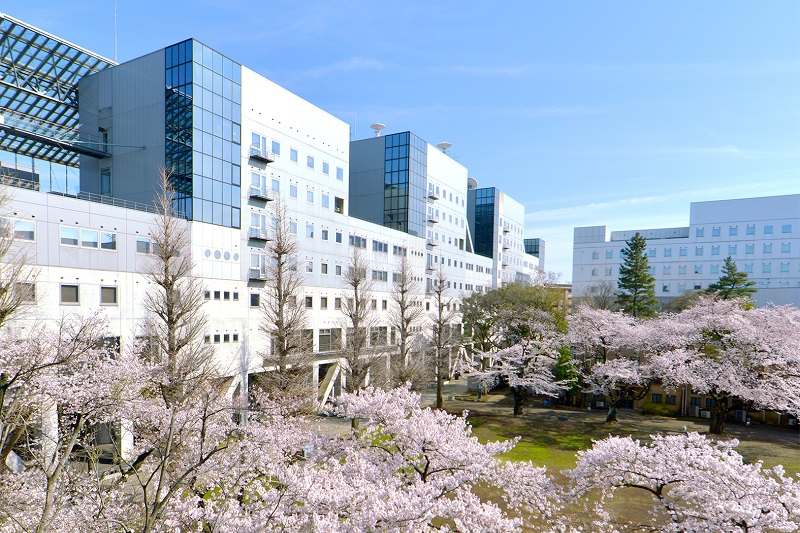
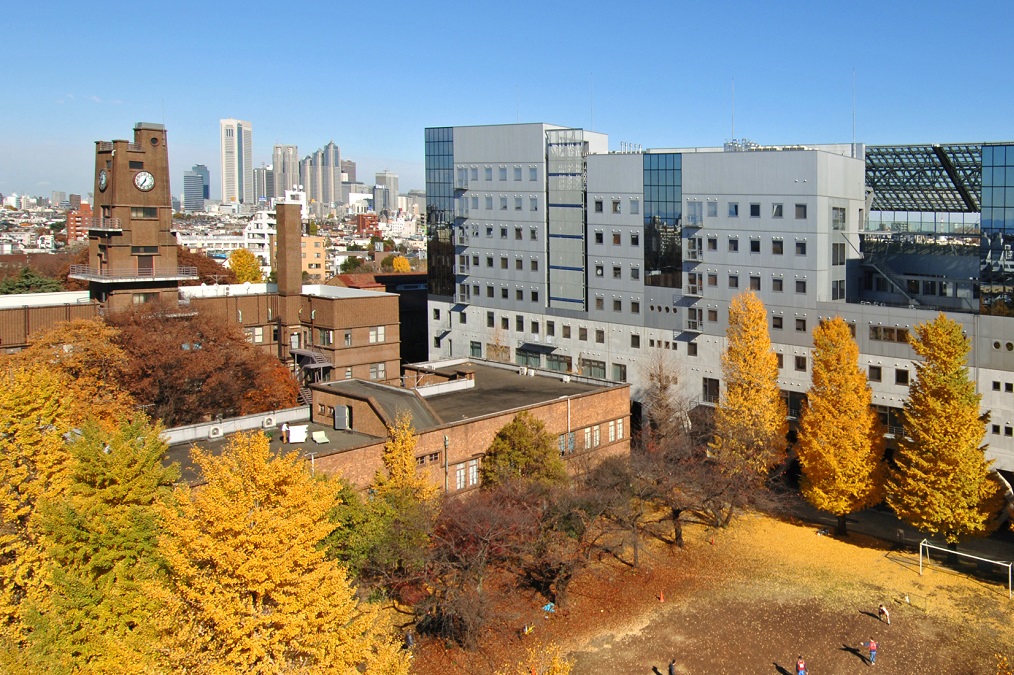
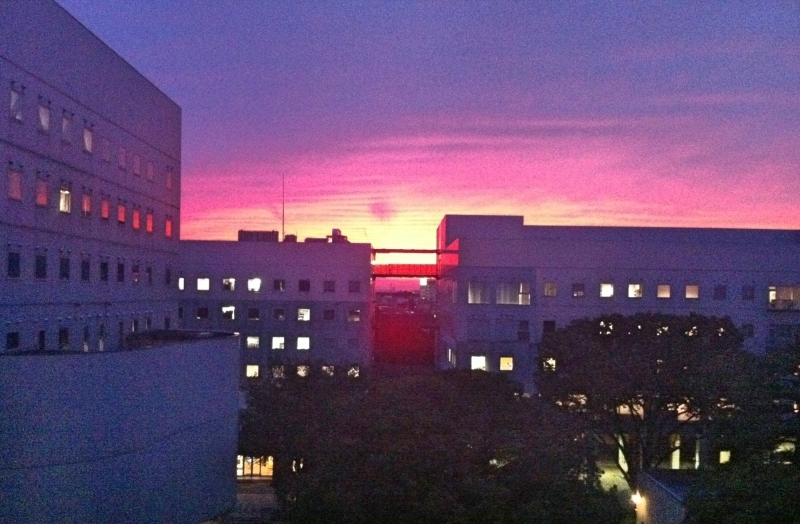
At the University Square (photo 9), you see people running around playing football (soccer) during lunch breaks, and the sight of the trees that change their appearance through the days and seasons is therapeutic. It is particularly picturesque in the spring, with the cherry blossoms blooming (photo 10), and in the autumn, with the ginkgo trees painting the landscape gold (photo 11). From time to time, a mystical atmosphere diffuses across the campus at dusk as extraordinary colors fill the sky (photo 12).
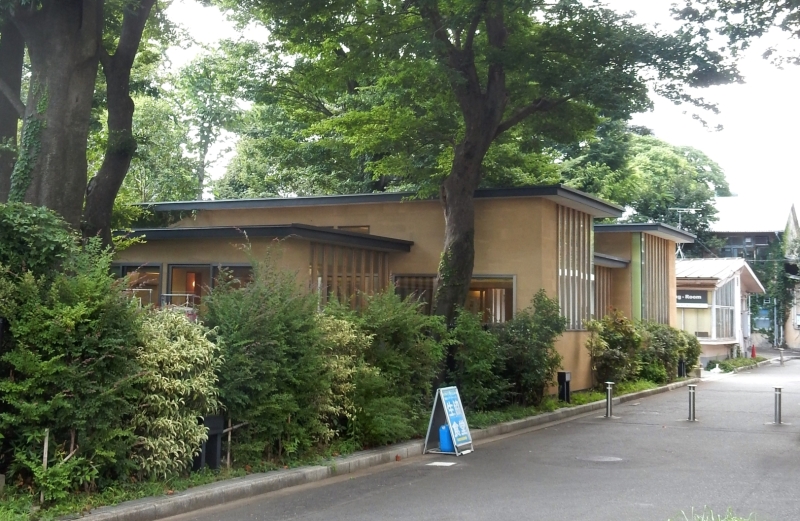
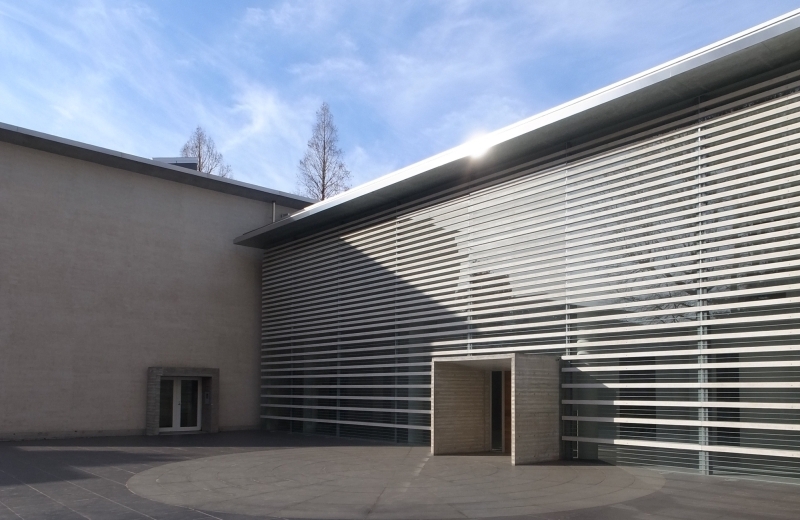
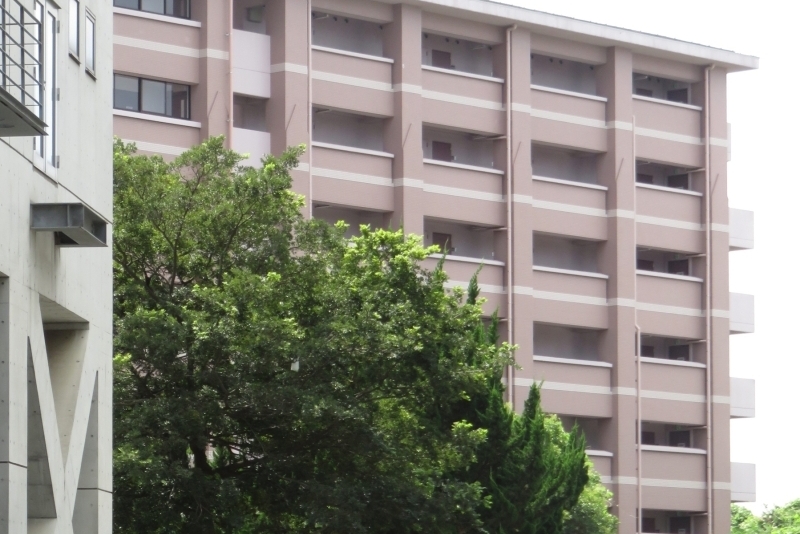
There are also very unique facilities within this extensive campus, such as the Komaba Mukunoki Day Nursery, a daycare center for small children located on the west side and surrounded by large muku trees (photo 13). The S block (designed by Professor Kotaro Imai), which used to be a wind tunnel testing facility, is on the south end of the campus and is now used as an international center where designers and engineers work together (photo 14). The Komaba Lodge Main and its annex facilities (photo 15) take up the southeast area, and are used as accommodations for students and researchers visiting Japan from overseas – they are usually fully occupied.
* Pictures 6, 10 and 11 were provided by the Image Technology Room of the Institute of Industrial Science.
Note: This article was originally printed in Tansei 35 (Japanese language only). All information in this article is as of September 2017.






